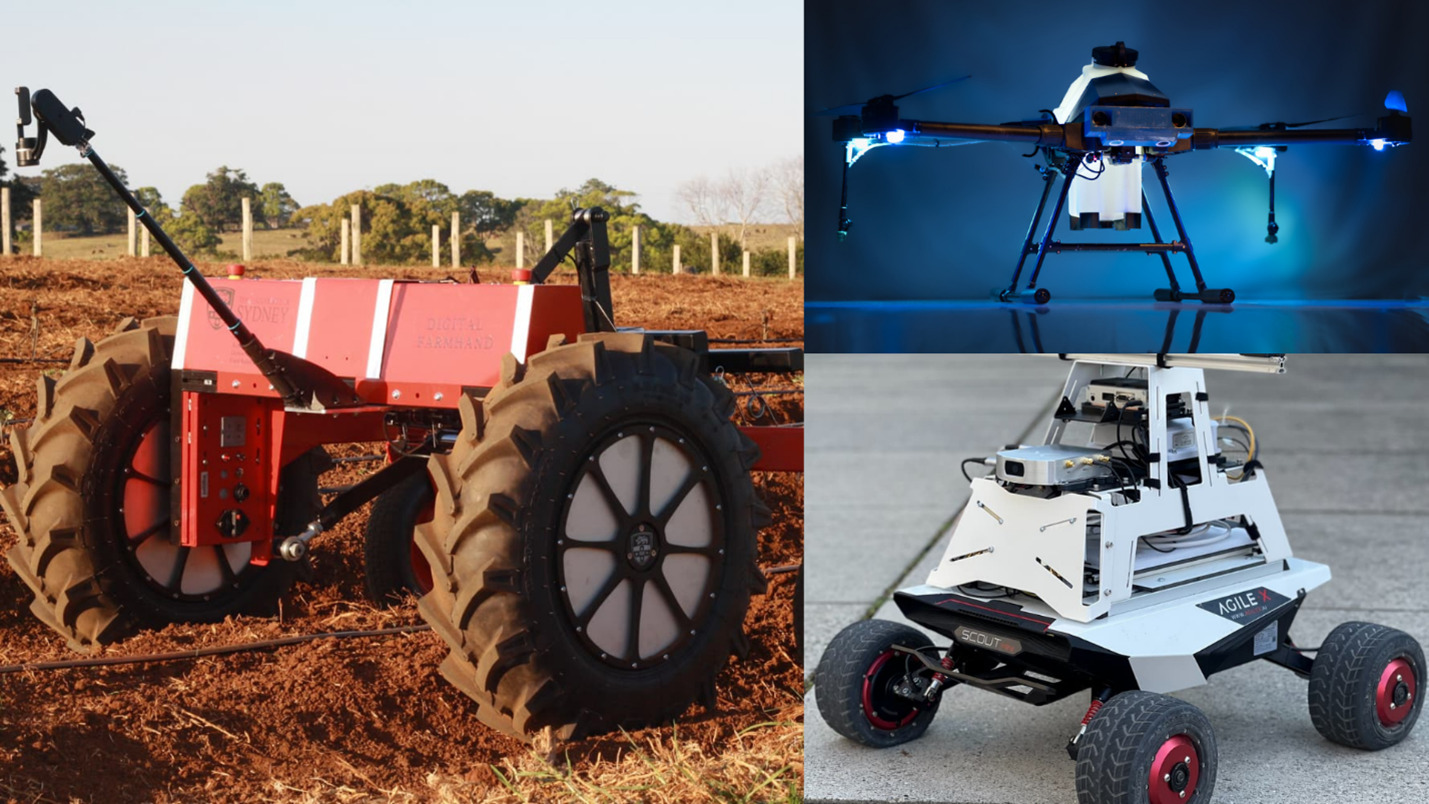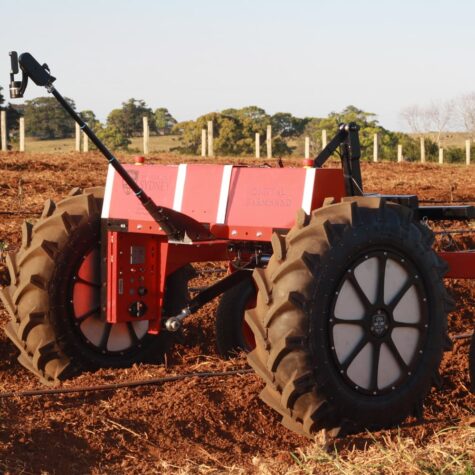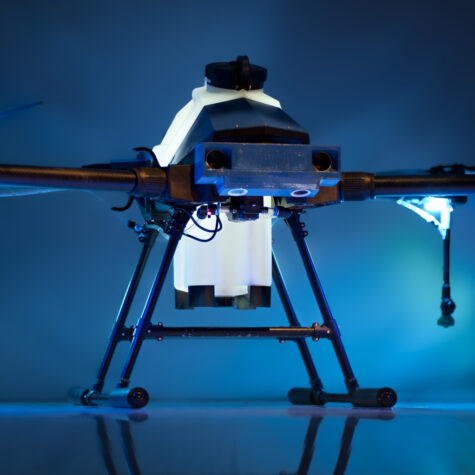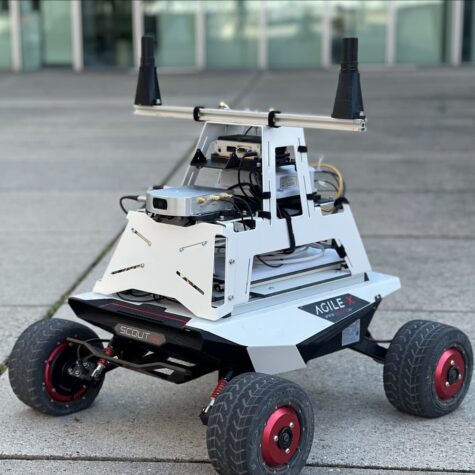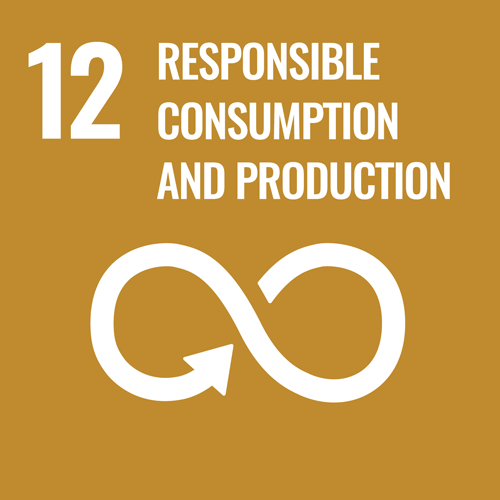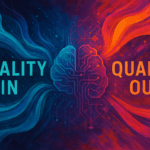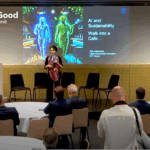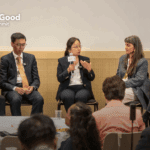The 2023 edition of the AI for Good Global Summit will take place in Geneva, 6-7 July. Over 30 cutting-edge robots are gearing up to take part in the Robotics for Good exhibition, which will show the potential of autonomous robots to drive progress towards the United Nations’ Sustainable Development Goals (SDGs).
In this series of blog posts, we will be introducing some of the robots attending the Summit and explain how they are contributing to the SDGs.
Episode 6: Robots for agriculture
As the global demand for food continues to rise, innovative solutions are emerging to help optimize operations in agriculture. Enter robots – the new, high-tech workforce in agriculture. These versatile machines can handle a wide range of tasks, from planting and irrigation to pest control and soil analysis. By automating these processes, farmers can reap the benefits of increased productivity, reduced labor costs, and a reduced need for harmful chemicals. And with the added bonus of collecting valuable data to fine-tune crop yields and resource management, it’s clear that the future of farming is all about farming smarter, not harder.
Digital FarmHand is a robotic platform designed for smallholder farms developed by the University of Sydney’s Australian Centre for Field Robotics (ACFR). With its advanced ability to detect and identify objects in its environment, such as plants and weeds, this robot can carry out a range of tasks, including mapping fields and collecting data on crop health and yield.
But perhaps the most significant benefit of the Digital FarmHand is its potential to revolutionize the farming industry. By automating the process of identifying and removing weeds, the robot can help farmers reduce their reliance on herbicides and other harmful chemicals, ultimately leading to cost savings and a safer, healthier environment for all.
AGRIM-X is a fully autonomous drone designed for precision agriculture developed by Suind. This cutting-edge drone uses state-of-the-art computer vision and AI algorithms to provide farmers with high-resolution images of their crops, giving them the insights they need to make informed decisions about their agricultural practices. And with its autonomous operation, AGRIM-X can navigate and collect data on its own, without any human intervention needed. This drone is also lightweight and agile, allowing it to easily maneuver through fields and capture data from multiple angles.
Vision RTK Fusion is a technology developed by Fixposition AG, a Swiss company specializing in high-precision positioning and navigation solutions. The technology combines Real-Time Kinematic (RTK) positioning with visual sensing, enabling precise and robust alignment even in challenging environments. This allows it to function outdoor, under tree cover, in the urban canyons and in green houses and barns. The technology also offers high levels of precision, making it well-suited for applications that require accurate positioning.
According to research from the Food and Agriculture Organization of the United Nations (FAO), global crop demands are set to increase by 60 per cent by 2050. AZO Robotics proposed that the global agricultural robot market was valued at over $43 billion in 2021. It is estimated that the market will reach a total market value of more than $81 billion by the end of 2028 .
Agricultural robots are revolutionizing the world of farming in unprecedented ways. These versatile machines can operate in a diverse range of environments, from the cozy confines of indoor greenhouses to expansive outdoor fields, adapting seamlessly to various crop types. The increasing adoption of robotics in agriculture is a testament to the transformative power of technology in addressing pressing global challenges.
These technological marvels are playing a significant role in achieving SDG 12: Responsible Consumption and Production. By transforming the ways in which planting, irrigation, and harvesting processes are optimized, agricultural robots according to Root AI use less than 90% of water for over 20x the amount per crop per acre. As tireless workers, robots can detect crop diseases early on and even enhance access to food in resource-limited areas. By reducing production costs, they are making food more affordable for consumers, helping with SDG 2: Zero Hunger.
One such robot, Vision RTK Fusion, is designed to help farmers improve access to food, particularly in areas with limited resources or during periods of drought or famine. Its advanced navigation capabilities, combined with cutting-edge imaging technology, allow it to monitor crop health, identify potential issues, and help farmers take timely actions to prevent crop losses.
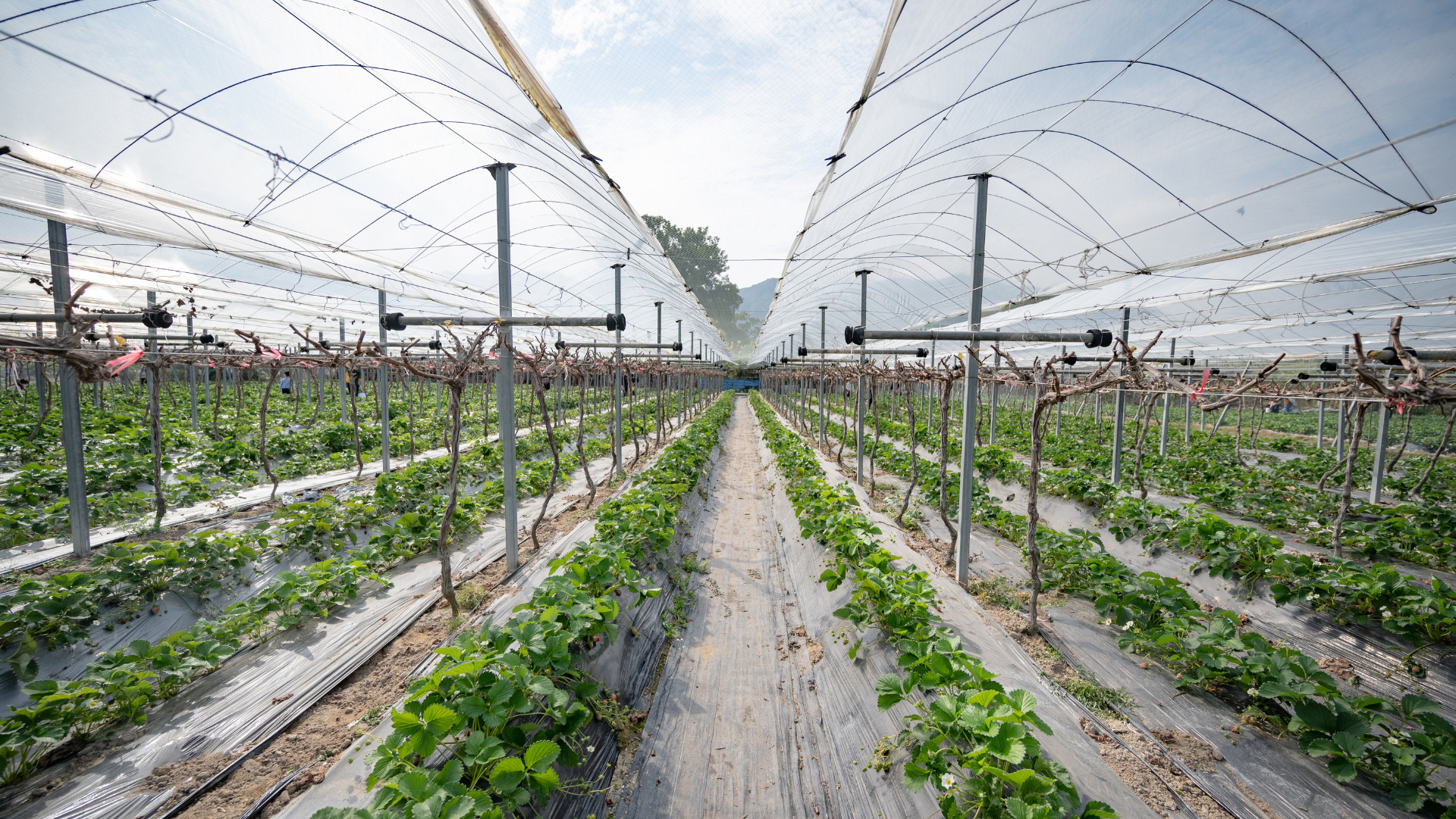
Agricultural robots are not only increasing productivity but also contributing to SDG 8: Decent Work and Economic Growth. Indeed, 50% of labour is on the cost of growing farm, and 55% of farmers are impacted by labour shortage, generating a move of 31% of farmer to less laborious crops (Ku and Serna). By reducing labor costs, these machines support farmers’ livelihoods and generate new job opportunities in the field of robotics.
Digital FarmHand and AGRIM-X are prime examples of agricultural robots that use precision farming techniques to optimize crop yields. They are equipped with advanced sensors and algorithms that analyse soil conditions, crop health, and weather patterns, enabling them to make data-driven decisions on planting, irrigation, and fertilization. This approach not only leads to higher yields but also reduces the use of harmful chemicals, helping to conserve natural resources and promote sustainable production patterns.
These eco-friendly machines are also making strides in achieving SDG 12: Responsible Consumption and Production. The European Commission set up new rules to reduce the risk and use of pesticides in the EU that by 2023, 50% of chemical pesticides needs to be reduced. By automating repetitive tasks, agricultural robots enhance productivity, use resources more efficiently, and lower food production costs. Consequently, they promote sustainable agriculture practices and contribute to a greener future.
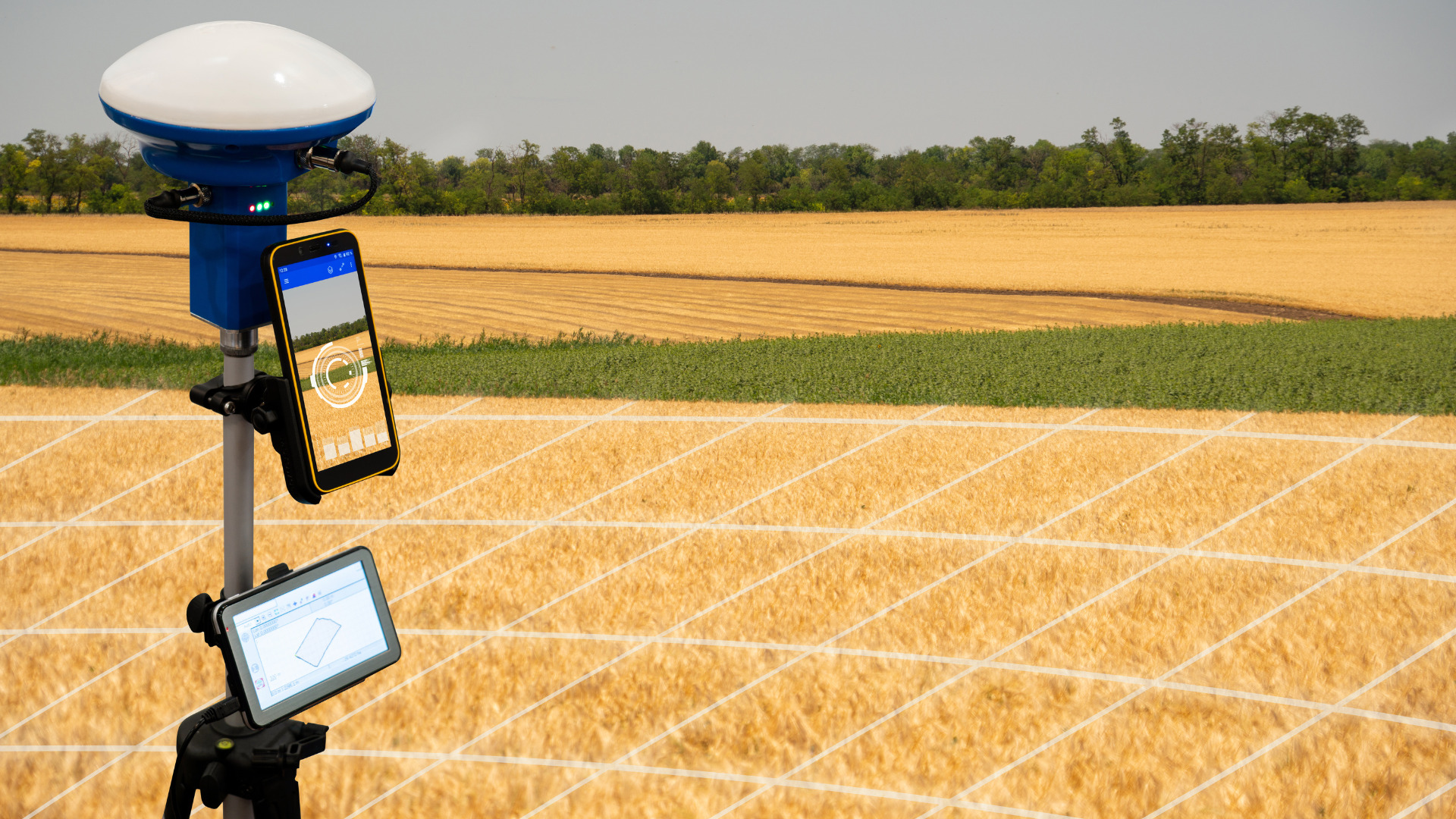
Furthermore, agricultural robots play a vital role in tackling SDG 13: Climate Action. These machines help reduce greenhouse gas emissions and decrease the need for fertilizers and pesticides-Precision agriculture, enabled by these robots, promotes more efficient use of resources such as water and energy, thus helping to mitigate climate change effects.
As the agricultural sector embraces the future, robots provide indispensable support for farmers. Professor Salah Sukkarieh of the University of Sydney notes, “This is an industry where robots are a good news story […] They can help farmers reduce costs and make better decisions”. Agricultural robots are transforming the industry, from boosting productivity to promoting sustainable farming practices, ensuring a brighter and more prosperous future for all.
In addition to the aforementioned benefits, agricultural robots can help achieve SDG 12: Responsible Consumption and Production by reducing waste, improving efficiency, encouraging sustainable practices, and improving traceability in the food supply chain. Enhanced traceability ensures that consumers have a clear understanding of the origin of their food, promoting responsible consumption choices. By supporting sustainable consumption patterns, agricultural robots contribute to a more sustainable future for the planet.
The integration of robotics in agriculture is also fostering the growth of innovative farming practices, paving the way for new business models and partnerships. Companies specializing in agricultural robotics collaborate with farmers and researchers to develop custom solutions tailored to specific needs, fostering a more responsive and resilient agricultural sector.
Moreover, agricultural robots are playing a vital role in preserving biodiversity and protecting natural habitats. By optimizing the use of inputs such as fertilizers, pesticides, and water, robots can reduce the negative impact of farming on the environment. This eco-conscious approach helps maintain the delicate balance of ecosystems and supports the conservation of biodiversity.
Robotic innovations like swarm technology, which involves multiple robots working in tandem, are pushing the boundaries of what agricultural robots can achieve. Such technology allows for greater precision and efficiency in farming operations, leading to more sustainable and productive agricultural practices.
As the global population continues to grow, the demand for food is expected to rise significantly, placing immense pressure on the planet’s resources. Agricultural robots are poised to play a pivotal role in meeting this growing demand while ensuring sustainable food production. By optimizing resource usage, reducing waste, and enhancing productivity, these machines can contribute to a more food-secure and environmentally responsible future.
The adoption of agricultural robots is also expected to accelerate the development of smart farming infrastructure. Advanced sensor networks, data analytics platforms, and cloud-based services will become increasingly commonplace, enabling farmers to make better-informed decisions and manage their operations more efficiently. This data-driven approach to agriculture will help minimize risks, reduce uncertainties, and optimize the allocation of resources.
In conclusion, agricultural robots hold immense potential to contribute to multiple SDGs by enhancing food production, fostering economic growth and sustainability, and minimizing environmental impacts. Their integration into the agricultural sector is reshaping traditional farming practices and laying the foundation for a more prosperous, resilient, and sustainable future for all.
Register for the AI for Good Global Summit to meet and interact with these agricultural robots.

How AI is revolutionizing food systems for a sustainable future

Empowering African innovators: Bridging AI and robotics with real-world solutions
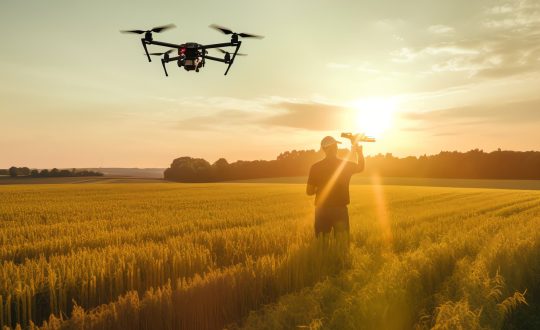
Powering Positive Change: Winning solutions from the 2023 tinyML Challenge...





